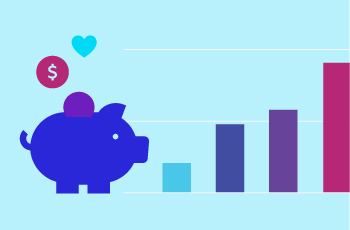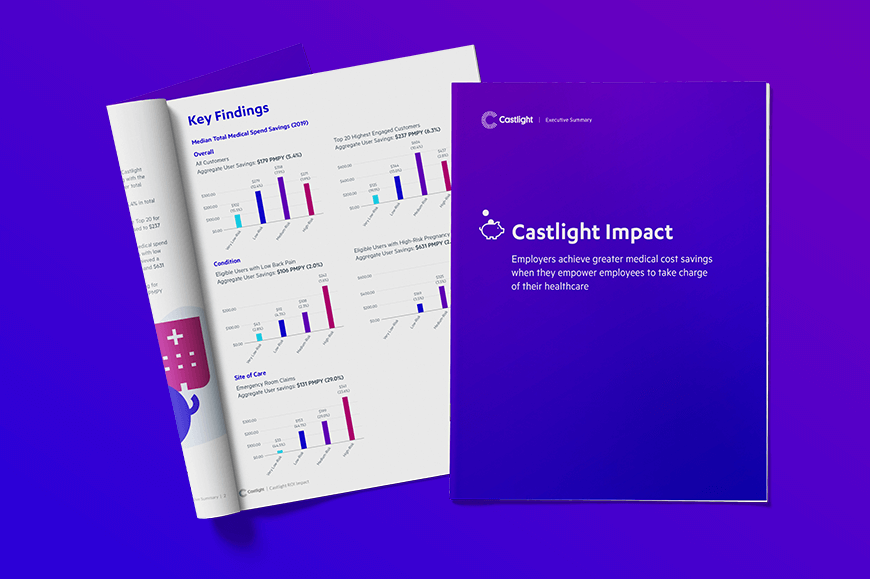
Employee Health Incentives: Lessons for Success
HR departments commonly use incentives programs to motivate healthy behaviors. In fact, approximately 84 percent of large companies use financial incentives, averaging $86 per employee per year, according to a recent RAND survey. For larger companies, the cost of incentive programs can reach millions of dollars per year.
The sad truth is that much of this spending is squandered, as many incentive programs are divorced from the best modern research on what actually motivates people.
We’ve reviewed extensive psychological research and tested various incentive models with thousands of employees in real-world settings. Based on our experience, here are 5 lessons for managing a great employer-sponsored incentives program:
1. Diversify the Rewards
Cash is not king. The thriving credit card reward industry exemplifies the value of reward diversification. Reward types are as varied as consumers themselves. Some people prefer accumulating airline miles. Others prefer hotel points. Others prefer cash-back. Just think about what types of cards you own.
People are motivated by rewards that are aligned with their values. So HR teams that provide only a single type of reward—cash—are catering only to a small fraction of their employee population’s preferences. Some employees put a lot of value in an extra $50 in their HSA account, while others will view that same reward with ambivalence or worse, yet another bureaucratic hassle. In other words, economic value and perceived value are not always the same thing. That is why reward personalization is so critical. It maximizes the perceived value of rewards, by providing each and every employee what is most valuable to them.
Consumer preference for credit card types
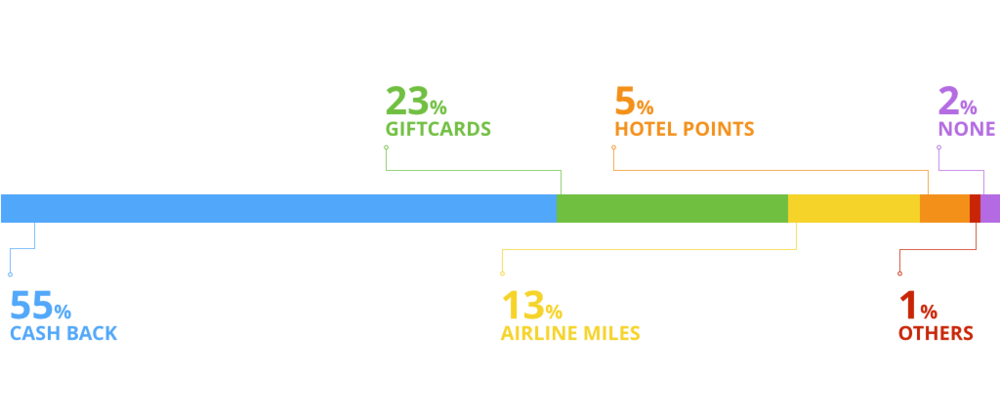
2. Personalize the ways to earn
Custom-tailored rewards work better. Just as your employees have different motivations, they also have different health and wellness goals. Traditional wellness programs have only skimmed the surface here, and historically have fallen into one of two camps:
- All employees were treated exactly the same, and given similar targets and similar incentives.
- Employees are divided into broad segments, such as “high risk” or “low risk”
This one- size-fits-all mentality to health misses the mark, and will significantly limit your employee’s engagement in health programs.
In reality, the best healthcare programs don’t just segment, they personalize. Here’s how you might personalize across different types of employees:
- Pregnant women – incentivize them for adherence to prenatal health plan
- Stressed out parents – incentivize them for participation in mindfulness and meditation programs
- Diabetics – incentivize them for attending regular wellness visits
- Health nuts – incentivize them for walking 15,000 steps a day!
Important to note is that most of your employees will not fit neatly into any of the above categories. That’s why personalization is so critical. You can mix and match different elements to create a tailored incentive program that engages every specific employee, and helps them achieve their own individualized health goals.
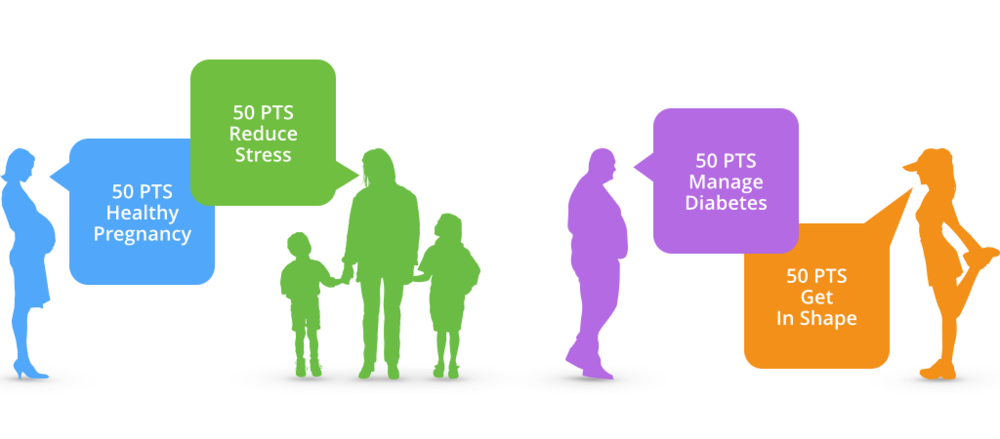
3. Create an engaging feedback loop
Timing matters. For incentives to make intuitive sense, people need to see a clear connection between their action and its reward. The most obvious way to do this is to shorten the time employees wait before receiving incentives. Wellness programs that provide incentives only at year’s end fail this crucial test. But the other extreme, handing out $1 bills every time an employee goes to the gym, is not practical to administrate.
One way to bridge the gap is with game mechanics like “reward points” and leveling up. Points can provide a rapid feedback loop for employees, but also keeps the reward fulfillment process manageable. Think of it as a sort of virtual currency that lets your employees keep score on a day-to-day basis.
To unlock the value of a points program, you need to provide employees with a virtual store, where they can redeem points for real-world rewards. With the store, users can match rewards to their own values, and find the prize that makes them feel good about their accomplishments. Many vendors can provide this sort of service, but the best ones will do it in a way that is fun, engaging, and addictive.
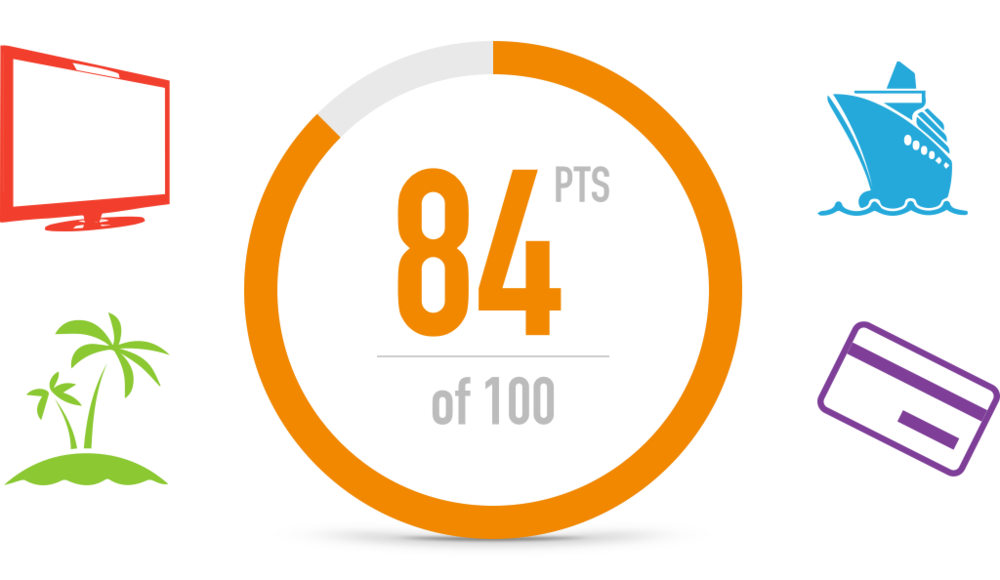
4. Small Rewards Go a Long Way
Leverage your incentives budget efficiently. Even very small rewards can motivate massive behavior change. A recent study by Alegus Technologies found that 84 percent of employees would participate in a wellness program for as little as $5 per week or $250 per year. And RAND came out with similar research, showing that participation jumps from 36% to 51% when incentives are increased past a $100 threshold. Small budget increases make a big difference!
In fact, of all the factors that contribute to a successful health incentives program, RAND concluded that incentives’ size did not even make the top 10 list. They argue that “larger incentives do have an effect, albeit a limited one.” The bottom line is that once a minimum threshold is met, program design matters much more that the budget allocated to the incentives.
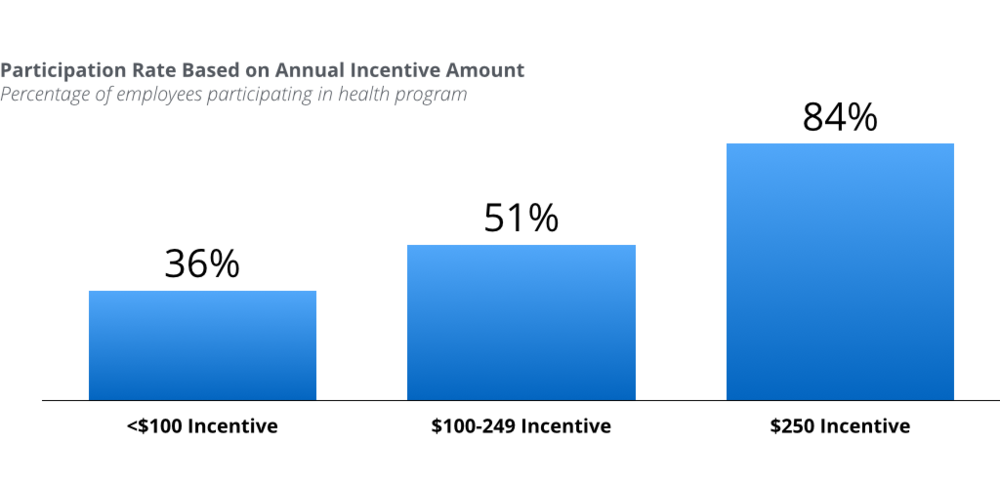
5. Build a Supportive Social Context
Infuse the rewards with meaning. How are the rewards regarded in your organization? Are they seen as scarce or abundant? Commonplace, or coveted? The answers to these questions weigh as heavily as the rewards themselves.
Rewards need social proof to be credible. Social proof means that your culture values the rewards intrinsically, above and beyond the reward’s economic value. If done right, your organization will not just value the rewards, but what they stand for—improved employee health and wellbeing. Below are a few ideas for how you can generate positive social momentum.
- Competition – encourage healthy competition around the rewards, by creating leaderboards, team-based competitions, and events.
- Executive involvement – get your senior leaders involved and visible in the program. They can attend key events, star in promotional videos, and hand out awards to the top employees.
- Recognition events – don’t just send your employees a check in the mail; make rewards a celebration!
- Symbols and totems – some of the greatest college rivalries are fought over seemingly worthless objects. The winner between Illinois and Ohio State get a Turtle. For Wisconsin and Minnesota it’s an axe. Think about what symbols you have at your company. Maybe you can rename a conference room?
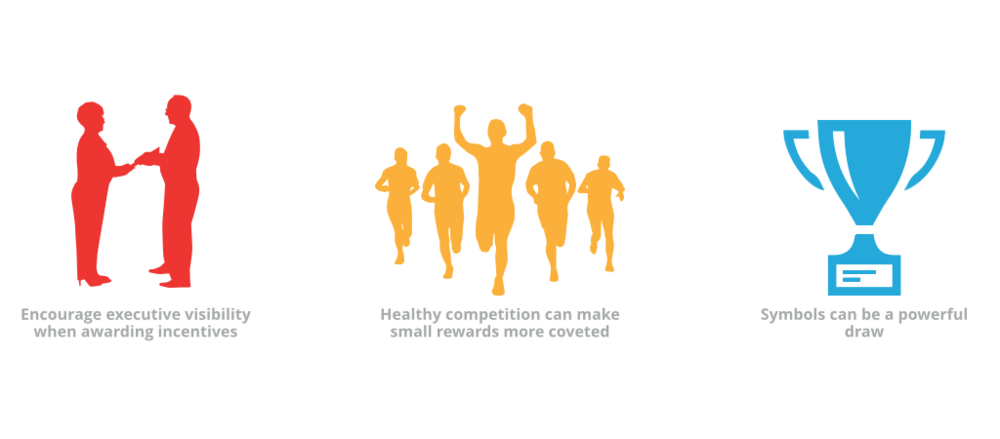
At Jiff, we work hard every day to help employers find the right way to incentivize their employees, and are excited to share what we learn along the way. We have seen what rewarding employees can do, and routinely observe over 50 percent reward redemption rates among our program participants.
Employers that follow our guidelines for incentives will increase their health program participation, enhance employee satisfaction, and ultimately deliver a greater return on their incentive program investment.
